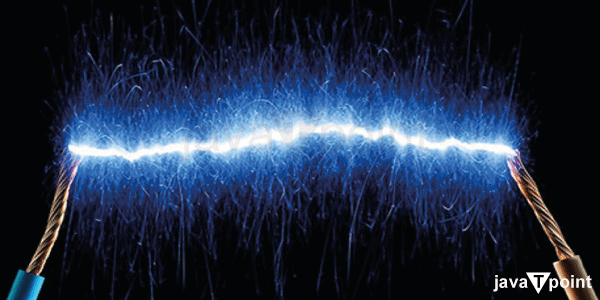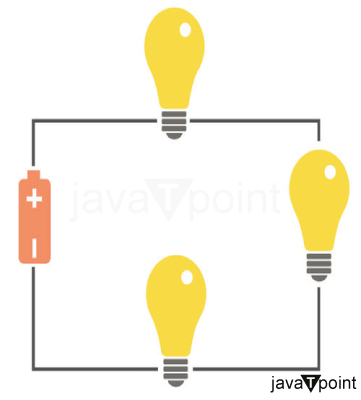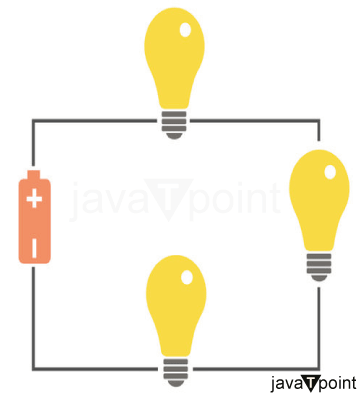Electricity FormulasIntroduction:Electricity, the invisible force that powers our modern world, has reshaped every facet of our lives. From lighting our homes to fueling our devices, its presence is felt in countless ways. Behind this dynamic force lies a realm of mathematical equations known as electricity formulas, the key to comprehending and manipulating this potent energy source. 
Electricity involves various formulas that describe the relationships between different electrical quantities, such as voltage, current, resistance, power, and energy. Here are some of the most important electricity formulas with details: 1. Electric Charge (q):Electric charge is a fundamental property of matter, and it is the basis for all electrical phenomena. It is an intrinsic property of particles, such as protons and electrons, and can be either positive or negative. Electric charge is measured in coulombs (C). The concept of quantization of electric charge states that all observable charges are integer multiples of the elementary charge (e). This means that any electric charge q can be represented as q = n * e n = Integer (positive or negative) e = Elementary charge ≈ 1.602 x 10^-19 coulombs (C). 2. Current (I):Current refers to the flow of electric charge through a conductor. It is measured in amperes (A) and represents the rate at which electric charges pass through a given point in a circuit. a. Electric Current (I) in a Circuit (Charge Flow Rate):Electric current is defined as the amount of electric charge (Q) passing through a point in a circuit per unit of time (t): I = Q / t Where:
This formula shows that the current is directly proportional to the amount of charge flowing through the circuit and inversely proportional to the time it takes for that charge to flow.
Ohm's Law states that the voltage across a resistor (or any passive circuit element) is directly proportional to the current flowing through b. Current (I) in a Parallel Circuit:
In a parallel circuit, where resistors are connected side by side, the total current (I_total) flowing into the junction is equal to the sum of the currents (I₁, I₂, I₃, ..., I_n) in each branch: I_total = I₁ + I₂ + I₃ + ... + I_n In a parallel circuit, the voltage is the same across all branches, but the current may vary among the branches. c. Current (I) in a Capacitor Discharge:The current (I) in a charging or discharging capacitor is related to the rate of change of charge (dQ/dt) with respect to time: I = dQ / dt Where: I is the current through the capacitor (measured in amperes, A), dQ is the change in charge (measured in coulombs, C), and dt is the change in time (measured in seconds, s). In the case of charging, current flows into the capacitor, and in the case of discharging, current flows out of the capacitor. 3. Voltage (V):Voltage, also known as electric potential difference, is the measure of potential energy per unit of electric charge between two points in an electrical circuit. It represents the driving force that pushes electric charges through a conductor. a. Voltage (V) in a Series Circuit:In a series circuit, where resistors are connected in a chain, the total voltage (V_total) across the circuit is the sum of the individual voltages (V₁, V₂, V₃, ..., V_n) across each resistor: Vtotal = V₁ + V₂ + V₃ + ... + Vn This formula implies that the sum of the voltage across each resistor in a series circuit is the same as the total voltage across the circuit. b. Voltage (V) in a Parallel Circuit:In a parallel circuit, where resistors are connected side by side, the voltage (V) across each resistor is the same as the total voltage (V_total) across the circuit: V = Vtotal In a parallel circuit, the voltage is constant across all resistors, but the current may vary among the branches. c. Voltage (V) in a Capacitor:The voltage (V) across a capacitor is related to the charge (Q) stored on the capacitor and its capacitance (C): V = Q / C Where: V is the voltage across the capacitor (measured in volts, V), Q is the charge stored on the capacitor (measured in coulombs, C), and C is the capacitance of the capacitor (measured in farads, F). This formula indicates that the voltage across a capacitor is directly proportional to the amount of charge stored on the capacitor and inversely proportional to its capacitance. 4. Resistance (R):Resistance is a measure of how much a material or component impedes the flow of electric current through it. It is a fundamental property in electrical circuits and is measured in ohms (Ω). a. Resistance (R) of a Resistor:The resistance formula calculates the resistance of a resistor in an electrical circuit: R = V / I Where: R: It is the resistance of the resistor (measured in ohms, Ω), V: It is the voltage across the resistor (measured in volts, V), and I: It is the current flowing through the resistor (measured in amperes, A). This formula indicates that the resistance of a resistor is equal to the ratio of voltage across the resistor to the current flowing through it. b. Resistance (R) in a Series Circuit:
In a series circuit, where resistors are connected in a chain, the total resistance (R_total) is the sum of the individual resistances (R₁, R₂, R₃, ..., Rn): Rtotal = R₁ + R₂ + R₃ + ... + Rn This formula indicates that the total resistance in a series circuit is simply the sum of the individual resistances. c. Resistance (R) in a Parallel Circuit:In a parallel circuit, where resistors are connected side by side, the total resistance (Rtotal) can be calculated using the reciprocal of the sum of the reciprocals of the individual resistances (R₁, R₂, R₃, ..., Rn): 1 / Rtotal = 1 / R₁ + 1 / R₂ + 1 / R₃ + ... + 1 / R This formula indicates that the total resistance in a parallel circuit is always less than the smallest individual resistance. d. Relation with Resistivity ():The formula to calculate the resistance (R) of a conductor with uniform cross-sectional area (A) and length (L) using resistivity (ρ) is as follows: R = (ρ * L) / A This formula is applicable to various conductors like wires, cables, and other electrical components made from different materials. It helps you determine the resistance of a specific conductor based on its geometrical dimensions and the material's resistivity. It must be kept in mind that resistivity is a material property and may vary with temperature for some materials. 5. Resistivity ():Resistivity is a fundamental property of a material that characterizes its ability to resist the flow of electric current. It is denoted by the Greek letter "ρ" (rho) and is typically measured in ohm-meters (Ω·m) or ohm-centimeters (Ω·cm). Resistivity is a material-specific property and depends on various factors, including the material's composition, temperature, and impurities. The formula for resistivity relates the resistance (R) of a conductor made of a particular material to its dimensions. If a conductor has a uniform cross-sectional area (A) and length (L), then the resistivity (ρ) can be calculated using the following formula: ρ = R * (A / L) 6. Power Formula (P):Electric power (P) is the rate at which electrical energy is consumed or transferred in an electrical circuit. It is a crucial concept in electricity and is measured in watts (W). a. Power with Voltage and Current:The most fundamental formula to calculate electric power is based on Ohm's Law, which relates voltage (V), current (I), and resistance (R) in an electrical circuit. P = V * I This formula is used when you know both the voltage across a device (e.g., a resistor or a whole circuit) and the current passing through it. b. Power with Voltage and Resistance:You can also calculate electric power if you know the voltage (V) across a device and its resistance (R) using the following formula P = (V2) / R: NOTE: Watt's Law: A variation of Ohm's Law, Watt's Law expands on the concept of power. It is expressed as P = I²R or P = V²/R. This formula emphasizes how power is influenced by both current and resistance or by voltage and resistance. It illustrates the proportional relationship between power and these two variables. c. Power from Electrical Energy and Time:Electric power can also be calculated from the amount of electrical energy consumed (E) and the time (t) it took to consume that energy. Power (P) = Electrical Energy (E) / Time (t) P = E / t This formula is useful when you have data on the electrical energy consumed or transferred and the time over which it was used. /// 7. Energy (E) in an Electrical Circuit:Electrical energy is the amount of energy consumed or transferred in an electrical circuit over time. It is typically measured in watt-hours (Wh) or joules (J). a. Electrical Energy from Power and Time:The most basic formula to calculate electrical energy is based on the power (P) consumed by an electrical device or circuit and the time (t) it operates. Electrical Energy (E) = Power (P) * Time (t) E = P * t This formula gives you the total energy consumed or transferred by an electrical device or circuit over a specific period of time. b. Electrical Energy from Current and Voltage:If you have information about the current (I) flowing through a device or circuit and the voltage (V) across it, you can calculate the electrical energy consumed using the following formula. Electrical Energy (E) = Current (I) * Voltage (V) * Time (t) E = I * V * t This formula considers both the current and voltage as factors affecting energy consumption or transfer. c. Electrical Energy from Resistance and Current:When you know the resistance (R) of a device or circuit and the current (I) passing through it, you can calculate the electrical energy using the following formula: Electrical Energy (E) = (Current (I))^2 * Resistance (R) * Time (t) E = I^2 * R * t 8. Electric Work (W):Electric work involves the movement of electric charges through a potential difference (voltage), resulting in the transfer of energy. When a charge moves within an electric field, work is done on the charge, either gaining or losing energy depending on the direction of motion and the direction of the electric field. This energy transfer is a fundamental principle underlying the operation of electronic devices, circuits, and power systems. The formula for electrical work involves the electric charge (Q) and the potential difference or voltage (V) through which the charge moves. Electrical Work (W) = Electric Charge (Q) * Potential Difference (V) W = Q * V The SI unit of work is the joule (J). NOTE: Positive and Negative Work: The sign of the work indicates whether energy is gained or lost by the system. If the charge moves in the direction of the electric field (from lower potential to higher potential), the work done is negative, signifying energy loss. Conversely, if the charge moves against the electric field (from higher potential to lower potential), the work done is positive, indicating energy gain. The direction of the Electric Field: The direction of the electric field and the direction of motion of the charge play a crucial role in determining the sign of the work. The work is negative when the charge moves in the same direction as the electric field. The work is positive if the charge moves opposite to the electric field. Conclusion:In conclusion, electricity formulas serve as the backbone of our modern technological society, powering our homes, industries, and innovations. From the essential Ohm's Law to more complex equations, these principles govern the behavior of electric currents and circuits. Understanding these formulas is not only crucial for students and engineers but also empowers everyday individuals to make informed decisions about their energy consumption. These formulas only serve as the basis of your understanding of electricity. As you dive in-depth into the world of physics, these formulas get more complex.
Next TopicWhat is the Advantage of a Capacitor
|
 For Videos Join Our Youtube Channel: Join Now
For Videos Join Our Youtube Channel: Join Now
Feedback
- Send your Feedback to [email protected]
Help Others, Please Share









